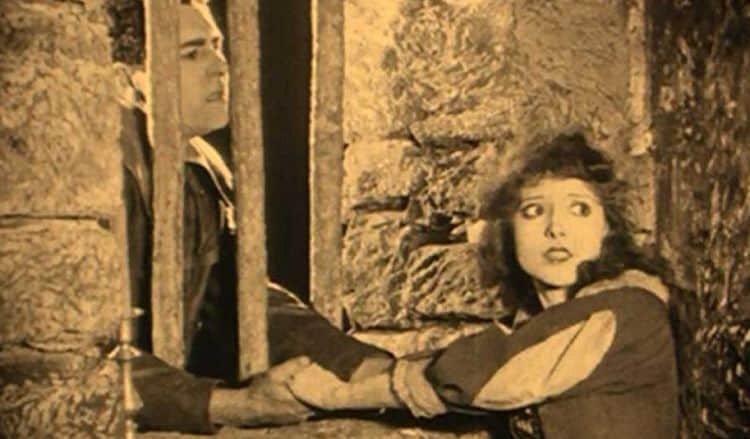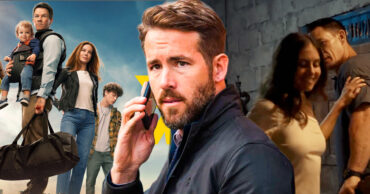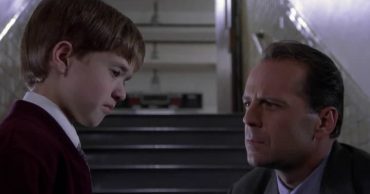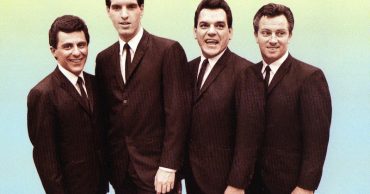
Imagine you were looking to have a good time at the movies and making quite a night out of it. But then, the only catch was that you had to choose only 10 movies for the entire year, and these were the only movies you could watch. We know, we know how scary this proposition sounds but only to humor us, which movies would you choose? Well, as you try to make up your mind, allow us to divulge one more tiny but important detail. All these movies need to be from the year 1922 — from exactly a century ago! Well, as flabbergasted as you may be, the reason behind this question is to take you back in time and let you in on What A Night Out At The Movies In 1922 Would Have in Store For You! So, get ready for a ride into the past and allow us to fill you in on your choices. And as is our way of doing things, we’ll make sure we mix this one up too!
Nosferatu: A Symphony of Horror
The obsession with horror films was still very much a thing in 1922 and as was the case with the German film industry, there were quite a few horror movies that made their way out from the German stables during the early decades of the twentieth century. Nosferatu: Symphony of Horror was one among them, and although the German expressionist had blatant similarities with the Dracula novel written by Bram Stoker in 1897, the film is still recognized as an unofficial and unauthorized adaptation, which to escape any hardcore similarities, went all out in renaming characters and changing settings so that it looked different from the novel. Bram Stoker’s heirs, however, did not buy this argument and after going to court, obtained a court ruling that proved the movie to be an infringement on copyrights and ordered the destruction of all known copies of the film. Thankfully, a few copies survived, and this is why we stand witness to a rather brilliant piece of creation from the year 1922. And despite all the controversy surrounding it, Nosferatu: A Symphony of Horror would have indeed made for a fine night out at the movies in 1922.
Foolish Wives
These days, we often hear of movies that are produced on huge budgets. But in 1922, when the movie industry was only just spreading its wings by trying to move beyond the silent era, there was one movie that was made on a grand budget of $1.1 million and was proclaimed as the most expensive one of its time — Foolish Wives. One of the main reasons why the movie was so expensive was its length. Writing, directing, co-producing, and even leading the cast of the film was the versatile Erich von Stroheim, and it was Erich’s original thought that the movie should have a runtime of no less than six to ten hours, a notion that was unheard of at the time. And to accommodate this length, the filmmaker has decided that the movie would be shown in parts. The big shots at Universal Studios, however, found the plan to be rather over-the-top and made so many drastic chops that even the original cut, which had a lower runtime of 384 minutes than the intended one, was cut further so that when it was released in theaters on January 11, 1922, had a runtime of only 117 minutes. The sensual portrayals in the movie and the sensational scenes made quite the headlines, and not all of them heaped praises. In some quarters, Foolish Wives is still recognized as an overhyped piece of work that had Erich von Stroheim’s egotism written all over it. But in 1922, it sure would have made for a rather adventurous night out at the movies!
Dr. Mabuse, the Gambler
The Dr. Mabuse series of films were quite the rage during the twentieth century and Dr. Mabuse, the Gambler was the first one to bring to life the character made famous by novelist Nobert Jacques’ works. Although the movies that followed — The Testament of Dr. Mabuse in 1933 and The Thousand Eyes of Dr. Mabuse in 1960 — were sound sequels, the one that was released in 1922, going by the technology of the time, was still the silent time. The movie is quite unique for one major reason, that it was not one or two, or even three, but four and a half hours long! So, did audiences have to sit in the theaters for that long? Well, not really! Due to the extraordinary length of the film, it was released in two parts, and a month apart. The first part was named The Great Gambler: A Picture of Time and the second, Inferno: A Game for the People of our Age. The movie was popular for several reasons, and one of them was that it was viewed as more than just another piece of entertainment, and was widely revered as a piece of creativity that reflected the changes that were taking place in society at the time. One line probably defines what we mean to across better than any other. As the popular German illustrated weekly Berliner Illustrite Zeitung wrote, the movie “will give people fifty or hundred years from now an idea of an age they could hardly comprehend without such a document”. Truly, Dr. Mabuse, the Gambler was more than just another movie.
Tess of the Storm Country
Quite a few films were inspired by the 1909 romance novel of the same name by Grace Miller White, and among them was the 1922 film Tess of the Storm Country starring Mary Pickford. Ironically, Mary had also starred in the previous and the very first film adaptation of the novel in 1914. The first one was directed by Edwin S. Porter and the one that was released in 1922 was directed by John S. Robertson. A decade later, Alfred Santell gave the adaptation another go with Janet Gaynor in the lead while the 1960 movie directed by Paul Guilfoyle and led by Diane Baker was the last of the lot. The first two movies starring Mary Pickford were from the silent era and it was only from the 1932 version that the adaptations carried sound. Nevertheless, it was mainly mary’s immense love for playing the character that had her notch the role a second time in 1922, and of course, the fact that she had to cozy up to the audiences once again after delivering a flop in Little Lord Fauntleroy. Well, her second attempt at Tess of the Storm Country certainly did the job and is recognized not just as one of her finer works but also as one of the best movies you could have watched if you were out watching movies in 1922.
Lorna Doone
The Lorna Doone story was yet another novel, this one by Richard Doddridge Blackmore, that caught the fancy of filmmakers through the decades, with several adaptations finding their way to the big screen over the years. First, there was a 1912 film that was directed by Wilfred Noy, and the one we’d be paying attention to, the Maurice Tourneur-directed 1922 film, and these were followed by several others in 1934 and 1951. There were even a couple of televisions series and television films that were centered around the plot of revenge and murder but with righteousness and a fight against evil tyranny justifying it all, this one also makes for quite an adventurous ride through the times that were the 1600s. Led by a cast consisting of Madge Bellamy as Lorna Doone, Mae Giraci as a young Lorna, John Bowers as John Ridd, the other main protagonist of the film, and others such as Charles Hatton, Frank Keenan, Jack McDonald, Donald McDonald, and more, Lorna Doone is a film that catches us off-guard with all its violence and killings, but also helps us appreciate the painstaking efforts the cast and the crew of the film had gone through to bring to us highly-detailed sequences that must have surely been a challenge during the time.
The Glorious Adventure
If it’s a glorious night out at the movies that you seek in the year 1922, there could nothing more fitting than the British version of The Glorious Adventure (a film by the same name was made by American filmmakers in 1918). Revolving around the plot of a young man leaving home and the girl he loves as a 14-year-old suddenly discovering that he is the heir to a vast estate and title, and hence, now an easy match to be a suitor to the girl of his dreams, and how the villains of the story do everything they can to snatch him of his fortunes and even leaving him for dead, the movie is quite the treat as far as storylines go, and even has a few action sequences of note. With loads of twists and turns and one that even as an evil henchman playing the role of a savior later, this one is sure to leave you with an adventurous high! Led by a cast consisting of Diana Manners, Gerald Lawrence, Cecil Humphreys, and Victor McLaglen, The Glorious Adventures sure would have made for the perfect adventurous night out at the movies in 1922!
The Three Must-Get-Theres
In 1922, if it was all-out fun that you were looking for, with loads of satire and even mockery making up the humor in it, you would have headed straight to a movie theater playing The Three Must-Get-Theres. And no, we didn’t mean to write musketeers there at all. In fact, this would be a good time to reveal that this one sounds very similar to the title you thought it was because this movie was a parody of one released only the previous year, The Three Musketeers. There were several comparisons made between the two films, of course, and the general opinion of those who had watched both movies was that they were two movies that despite following the same storyline, managed to bring to the audience two very different takes of it. In this one, the good-hearted nobleman who has been experiencing tough times comes with the hope of becoming a musketeer to the king, who is named Dart-In-Again. As fate would have it, Dar-In-Again ends up fighting and then striking a friendship with a group of three musketeers — in this case, Walrus, Octopus, and Porpoise! Caught in a royal mix-up that has Dart-In-Again playing the role of a hero and subsequently falling in love, the main protagonists of The Three Must-Get-Theres are seen initiating and tackling one hilarious episode after another, with both, the dream of the hero to become a musketeer as well as his wish of marrying the girl he loves, finding fulfillment.
The Prisoner of Zenda
The Prisoner of Zenda is an 1894 novel that has caught the attention of quite a few filmmakers over time, and in addition to the one that was released in 1922, which had Lewis Stone and Alice Terry in the lead roles, there had been at least two movies related to the novel even before — the 1913 film with James Keteltas Hackett and Beatrice Beckley in the lead and the 1915 film with Henry Ainley and Jane Gail in the lead — and ever since — a 1937 film by the same name starring Ronal Colman and Madeleine Carroll, a 1952 film with Stewart Granger and Deborah Kerr in the lead, a 1979 film starring Peter Sellers and Lynne Frederick, and even a 1988 animated version titled Prisoner of Zenda. So how did the 1922 film do? Well quite good, actually! Directed by Rex Ingram, the film was from the silent era, and the last one without the magic of voice to it, and by those standards did quite well with the audiences as well as at the box office. The movie is of special personal significance to the director and lead actress as not just their hidden romance but even their hidden marriage took place during its filming! Calling it a day on one particular Saturday, the two lovers got married, spent the Sunday watching movies, and were both back to work on Monday as if nothing special had occurred. And no one had a clue that the two had walked off the set as lovers and walked right back as husband and wife. Only after The Prisoner of Zenda was in the cans that the two left on a honeymoon, which is when everyone realized that the two had been married for quite some time!
Grandma’s Boy
At the time, Grandma’s Boy was quite the breakthrough film, bringing to the screen a comedy that didn’t just consist of small gags but had a story that was woven together to provide a more meaningful end. The success of this movie inspired several others over the years and made comedy feature-length movies a real thing in the world of entertainment. And if you were looking for a night out at the movies in 1922, Grandma’s Boy would surely be on your list! It brings to life a rather simple story, that of a young good-hearted, and rather timid boy who wishes to woo the girl he has madly fallen in love with but has stiff competition from a rival playboy. While Harold Lloyd, who plays the role of grandma’s boy in the movie is left in the dust, it is the grandma, played by Anna Townsend, who rises up to the occasion and tells Harold about a magic charm that his grandfather had used for his heroics. The charm gives Harold some well-needed newfound confidence, allowing him to overcome his fears and win his love as well as being a criminal to justice! And guess what the magic charm turns out to be? Just a broken umbrella handle that his grandma had woven stories around so that the grandson could discover the courage she always knew he had in him! A beautiful story with loads of comedy sequences to keep you laughing, Grandma’s Boy would have sure made your night at the movies an enjoyable one!
When Knighthood Was in Flower
When Knighthood Was in Flower is a 1922 film based on Charles Major’s debut novel by the same name. There was also another film made in 1953, but this one was known by the original name only in the UK. In other territories, it was given the title The Sword and the Rose. But if it was the year 1922 that saw you stepping out to watch the movie, you would find yourself watching Marion Davies and Forrest Stanley in the lead roles, with Lyn Harding, Teresa Maxwell-Conover, Pedro de Cordoba, and others playing prominent roles. The plot of the movie revolves around the ways of the world where two lovers are not allowed to unite, especially when one of them is from a royal household! The movie was one of the pioneering ones as far as marketing and advertising went, and if you were to walk the streets in 1922, one of the many billboards, placards, electric signs, and even dedicated booths would have surely caught your attention, luring you into movie theaters to watch an equally dazzling film. Tagged as one of the most successful and endearing films of the year, you just wouldn’t have gone wrong in choosing When Knighthood Was in Flower for a night out at the movies in 1922!
That’s What A Night Out At The Movies In 1922 Would Have in Store For You!
Now, a century may seem like a long time but when you watch these movies from our list What A Night Out At The Movies In 1922 Would Have in Store For You, you realize that if it weren’t for the progressive, and at the time breakthrough, experiments in storylines, acting, direction, and even technology (as quaint as it may seem to us today) that were a part of these movies, we wouldn’t be where we are today as far as the quality of movies is concerned. So while these may look ancient to you, all you have to do is give them a chance to know that they are an act in themselves and if you could give them a chance, even these movies would entertain you as much as the blockbusters of today! Nevertheless, if you ever found yourself hopping into a time machine and traveling across time to the year that was 1920, these are the movies you would have in store for a perfect night out!
 Follow Us
Follow Us





